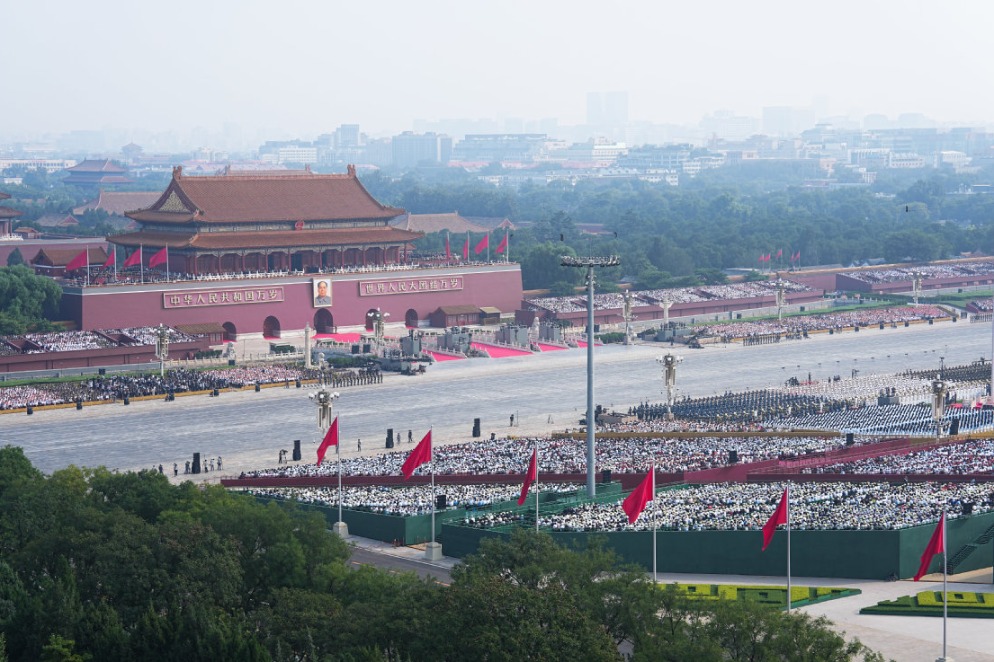'A natural extension'
BRI marks a landmark in China-Argentina ties, however long-term local, national, and regional economic development is needed to realize its full potential


BRI marks a landmark in China-Argentina ties, however long-term local, national, and regional economic development is needed to realize its full potential
It was 10 years ago, in September 2013, during a speech at the Nazarbayev University in Astana, Kazakhstan, that President Xi Jinping first referred to building an economic belt to strengthen ties between China and Central Asia. A month later, while addressing the Indonesian parliament, President Xi referred to strengthening ties and promoting cooperation between the Association of Southeast Asian Nations and China by building a maritime corridor for the new century. In addition, the creation of the Asian Infrastructure Investment Bank to finance infrastructure and interconnectivity projects within the region was also proposed.
The BRI had, from its beginning, two important and complementary dimensions, namely the international and domestic ones. Regarding the international dimension, it referred to the new positioning of China in the global economy as a growing geopolitical actor. As for the domestic dimension, the initiative would reinforce the process of reform and opening-up which had begun in the late 1980s by fostering economic development in central and western areas of the country, mainly through increased connectivity not only with China's neighboring countries in Central and Southeast Asia, but also further away.
Ten years later and with over 150 countries having participated in the BRI, it is a truly global initiative. Since its early announcements in 2013, interest in this initiative has extended to areas such as Latin America and Africa. In the case of Latin America, the region has a significant need for infrastructure investment, particularly geared toward enhancing connectivity, the development of domestic markets and the integration of productive areas and export markets. At the Belt and Road Forum held in Beijing in May 2017, two countries from Latin America — Argentina and Chile — were present. At that opportunity, President Xi mentioned that Latin America was the "natural extension" to the BRI. Currently both countries are members of the BRI and the AIIB, Argentina becoming the 20th Latin American country to join the initiative in February 2022 during the Argentine president's visit to Beijing to mark the 50th anniversary of diplomatic relations between the two countries.
The signed memorandum of understanding included several issues to ensure a win-win outcome and for enhancing economic complementarity between both countries, particularly by increasing bilateral investments, expanding bilateral trade, and incentivizing trade diversification. With the signing of the Belt and Road, both Argentina and China need to focus not only on the potential economic complementarities between them, but also on addressing the challenges that lie ahead and devise a joint roadmap. In order to achieve balanced, sustainable and long-term development, investments in infrastructure that lead to greater connectivity and foster inclusive development are needed. For Argentina, as stated in the MoU, it is crucial that the BRI supports the objective of enhancing our export capacity, export diversity, value added and local component share.
A few weeks before the signing of the BRI in 2022, Argentina and China held the fifth meeting of their strategic dialogue for economic cooperation and coordination. The main infrastructure projects to be developed in Argentina were identified at this dialogue. Several projects are incorporated into the Integrated Plan for China-Argentina Cooperation within the Strategic Dialogue, the others being included in the BRI Cooperation Plan, which was signed during the visit in June by Argentina Economy Minister Sergio Massa. This cooperation plan is crucial for advancing and enhancing infrastructure cooperation in the projects identified above.
During that visit, Minister Massa also met Wang Lingjun, vice-minister of the General Administration of Customs of China, to discuss issues regarding market opening negotiations for Argentine products. This is also a significant step for addressing two of the long-standing and most salient challenges in Argentina's bilateral economic exchanges with China — the growing trade deficit and the lack of export diversification. Argentina's main exports to China are historically concentrated in a few agricultural and agri-industrial products.
High-level meetings are therefore crucial to advance market access issues. Some of the ongoing negotiations include products such as swine and bovine offal, corn, nuts, and sorghum, among others.
Over the past several decades, China and Argentina have forged a solid economic partnership, based on complementarities, and increasing mutual trust, framed within our strategic economic partnership which has been in place since 2014. The signing of the Belt and Road Initiative marks another landmark in our bilateral relations with great potential and attractiveness. However, this is not free of challenges. Instead, local, national, and regional economic development of an inclusive, balanced, and long-term nature is needed to be able to realize our full potential and, consequently, derive win-win outcomes for both countries.
The author is vice-president of the Argentine Council of Foreign Affairs, former under secretary of Economic Negotiations at the Ministry of Foreign Affairs and former under secretary of Federal Planning at the Ministry of the Economy. The author contributed this article to China Watch, a think tank powered by China Daily. The views do not necessarily reflect those of China Daily.
Contact the editor at editor@chinawatch.cn.
































